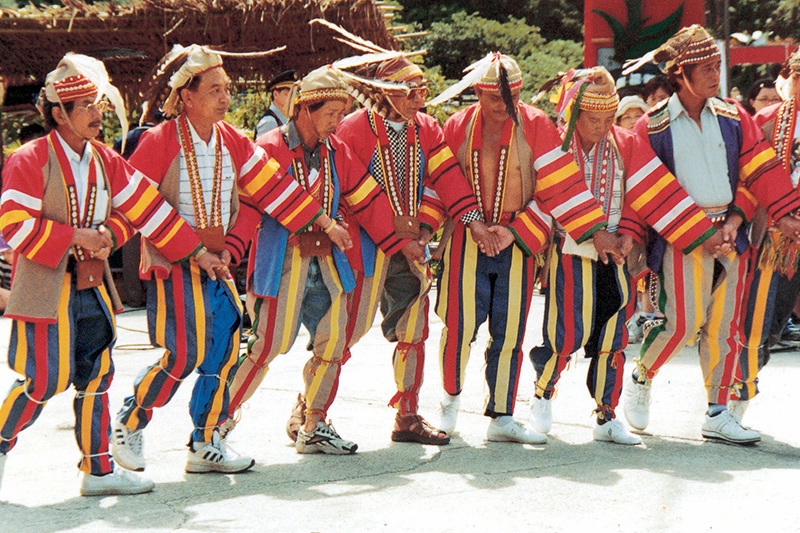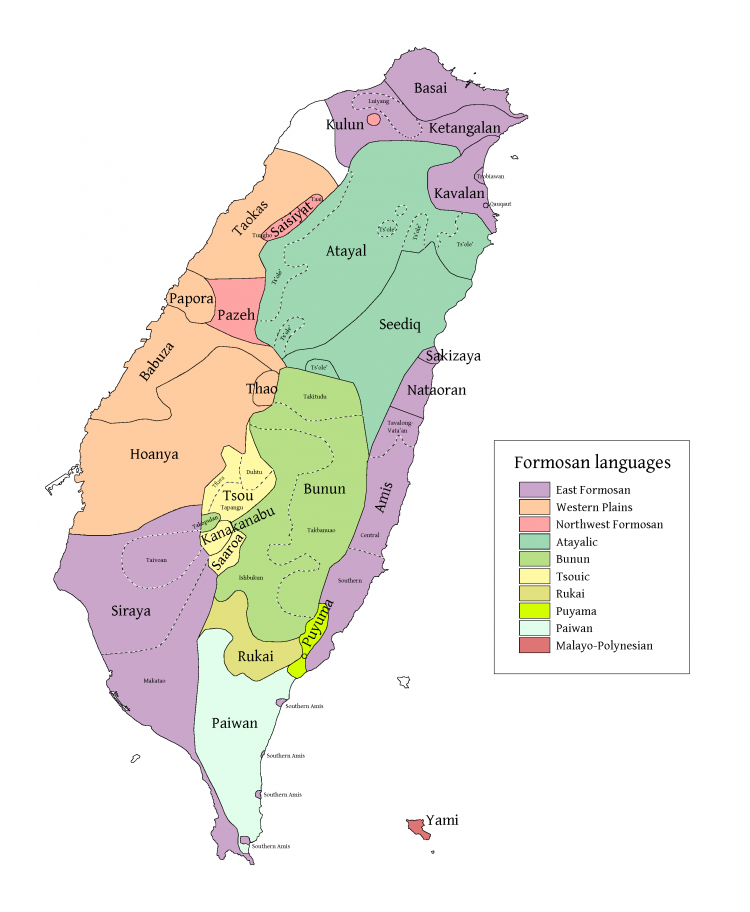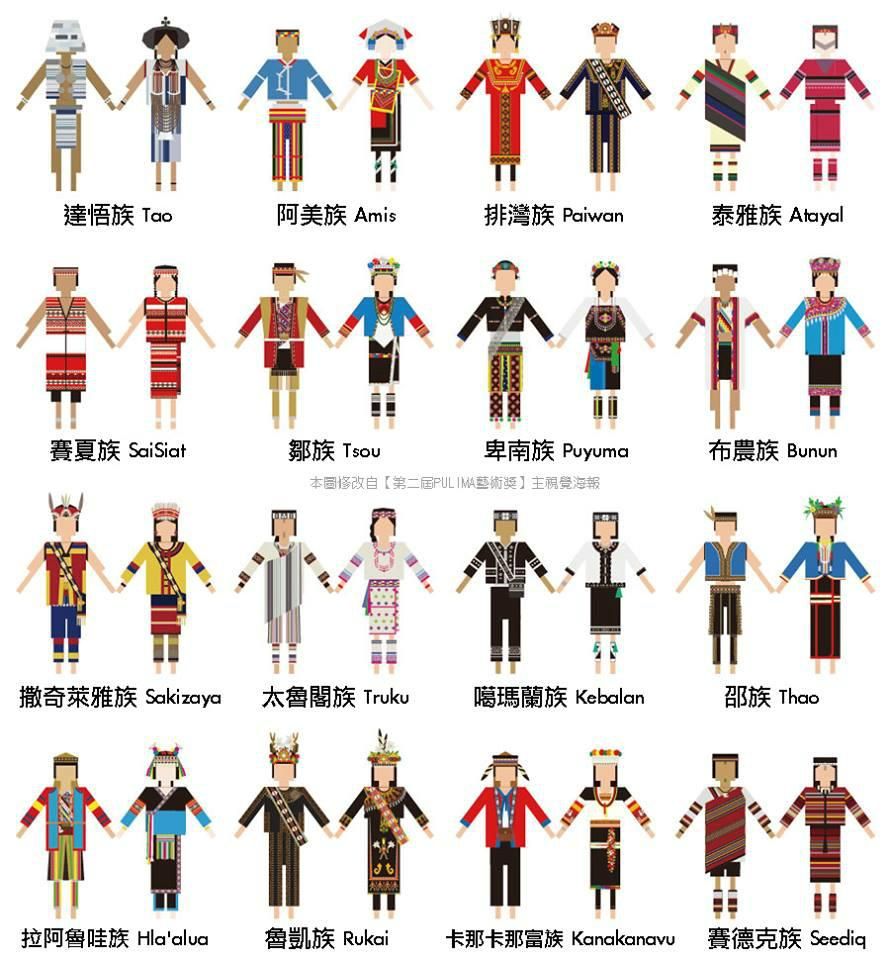
The Brief History of Taiwanese Indigenous Peoples
They are the indigenous inhabitants of Taiwan, or was called, Ilha Formosa, more than 8,000 years before the first arrival of the Han Chinese in the 17th century. The Taiwanese aborigines are Austronesian people which both are ethnically and linguistically related people of the Marshall Islands, Philippines and other Polynesian groups. (Read more: Taiwan and the Pacific: One Big, Happy Austronesian Family)
Taiwan indigenous people are estimated about 2% of the population of Taiwan. Just like many indigenous populations all over the world, the Taiwanese aboriginal population is slowly dying out.
Throughout Taiwan’s complicated history, a Variety of tribes have been gradually homogenised and assimilated by Chinese culture and the cultures of previous colonial powers, most notably Holland and other western Christian missionary groups. As well as their unique cultures and languages, are being lost. (Read more: BBC: Tribal Culture survives in Taiwan)
What were Taiwan Indigenous people called?
Qing Dynasty
As the Qing dynasty forced over the plains and made them struggle entering the mountains in the late 19th century, the terms Pingpu (Plains peoples) and Gaoshan (High Mountain peoples) were labeled as “civilized” and “uncivilized”. (Read more: Conflict and the Aboriginal-Boundary Policy of the Qing Empire)
Japanese Occupation Period
During Japanese rule (1895–1945), Japan maintained the binary classification. In 1900, they started to turn into their own colonial term: Peipo for the “civilized tribes” and “recognized tribes” for the aborigines who had formerly been called “uncivilized”. The Musha Incident (Wushe Rebellion) of 1930 led to many changes in aboriginal policy, and the Japanese government began referring to them as “Takasago-zoku“.
KMT
During the early period of Chinese Nationalist Kuomintang (KMT) rule the terms Shandi Tongbao which means “mountain compatriots” and Pingdi Tongbao referring to “plains compatriots”. Those names are invented to remove the presumed taint of Japanese influence and reflect the place of Taiwan’s indigenous people in the Chinese Nationalist state. The KMT later adopted the use of all the earlier Japanese groupings except Peipo.
Where are Taiwanese aborigines live today?
Today, Taiwanese aborigines are distributed all over Taiwan. Most Taiwanese aborigines live in mountainous areas along the east coast. These regions include Hualien and Taitung. However, nowadays many Taiwanese aborigines have migrated to the cities in search of better jobs.

| Amis 阿美族 | 194,000 | Hualien & Taitung |
| Atayal 泰雅族 | 83,000 | New Taipei, Hualien, Hsinchu & Nantou |
| Bunun 布農族 | 54,000 | Nantou, Kaohsiung & east Taiwan |
| Hla’alua 拉阿魯哇族 | less than 400 | inland of Kaohsiung |
| Kanakanavu 卡那卡那富族 | 550 | inland of Kaohsiung |
| Kavalan 噶瑪蘭族 | 1,300 | Hualien & Yilan |
| Paiwan 排灣族 | 93,000 | Sandimen & Taitung |
| Pinuyumayan 卑南族 | 12,800 | Taitung |
| Rukai 魯凱族 | 12,400 | Wutai & Taitung |
| Saisiyat 賽夏族 | 6,200 | Hsinchu & Miaoli |
| Sakizaya 撒奇萊雅族 | less than 700 | Hualien |
| Sediq 賽德克族 | 8,100 | Nantou |
| Thao 邵族 | less than 800 | Sun Moon Lake |
| Truku 太魯閣族 | 28,000 | Taroko Gorge |
| Tsou 鄒族 | 7,000 | Alishan |
| Tao (Yami) 達悟族 (雅美族) | 4,300 | Orchid Island |
Each tribe has their own cultural festivals (ceremonies) and traditional clothes.

Fun Fact fact about Taiwanese Indigenous Peoples
Why there are such a high percentage of Taiwanese Indigenous Peoples are Christian (about 70%) compared to Taiwan in general (only about 4%) ?
Taiwan has been part of a missionary jurisdiction since 1514 and began to work in Taiwan in early 16th century by both Catholic and Protestant missionaries. Spanish missionaries first started arriving at the Philippines in 1619 but then established a foothold in the north of Taiwan and started converting the locals in 1626.
Then the Dutch arrived, they drove the Spanish out of Taiwan in 1642. In 1661, the Dutch, on behalf of “early Protestantism”, was driven out of Taiwan by the Han Chinese Ming Dynasty loyalist Koxinga. (Read more: Things You Didn’t Know About Fort San Domingo)
During the Japanese era (1895-1945), no new missions were allowed, with the result that Catholicism and Presbyterianism remain the largest Christian denominations. But still, Taiwanese aborigines remain practicing animism, nature worship, and other indigenous religious rites according to their cultures.
留言